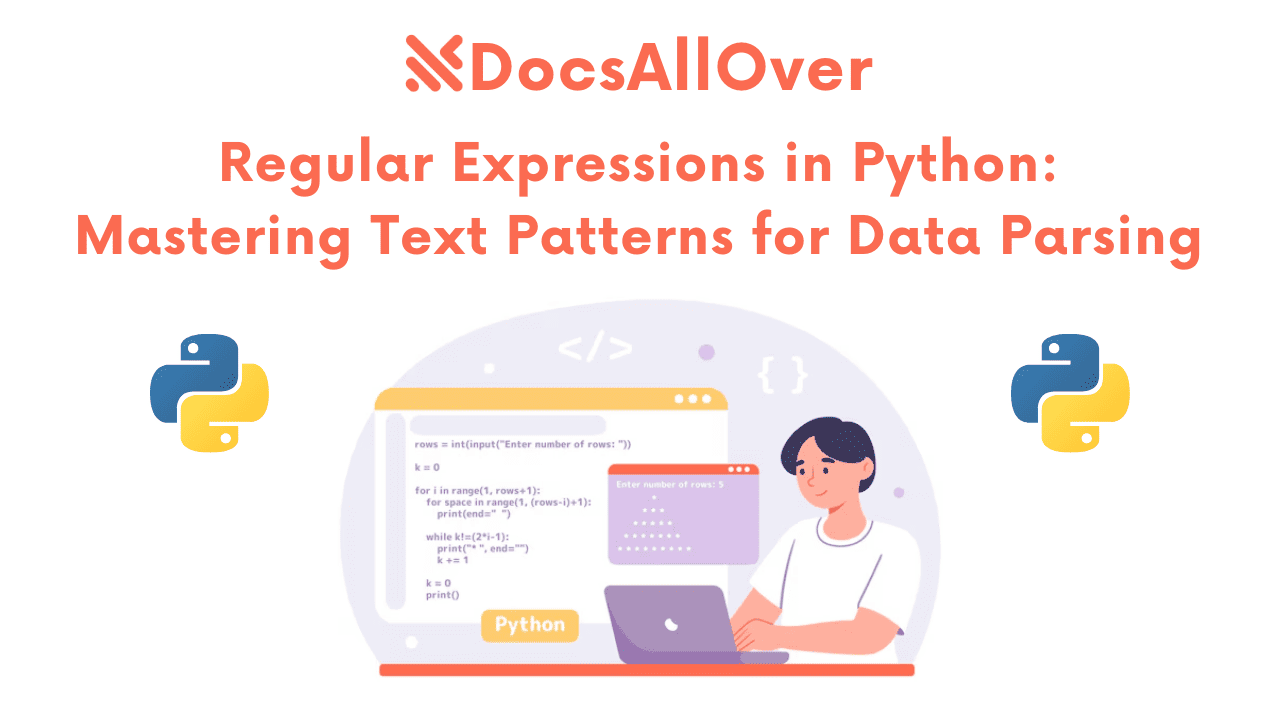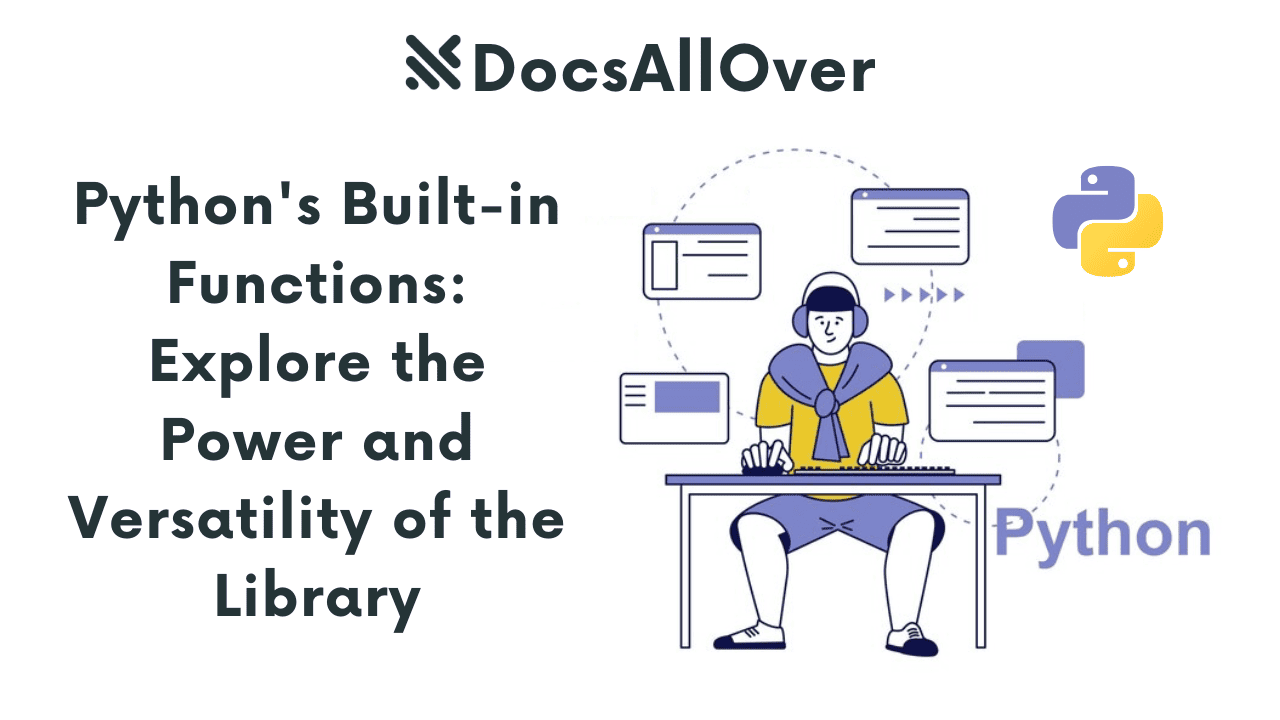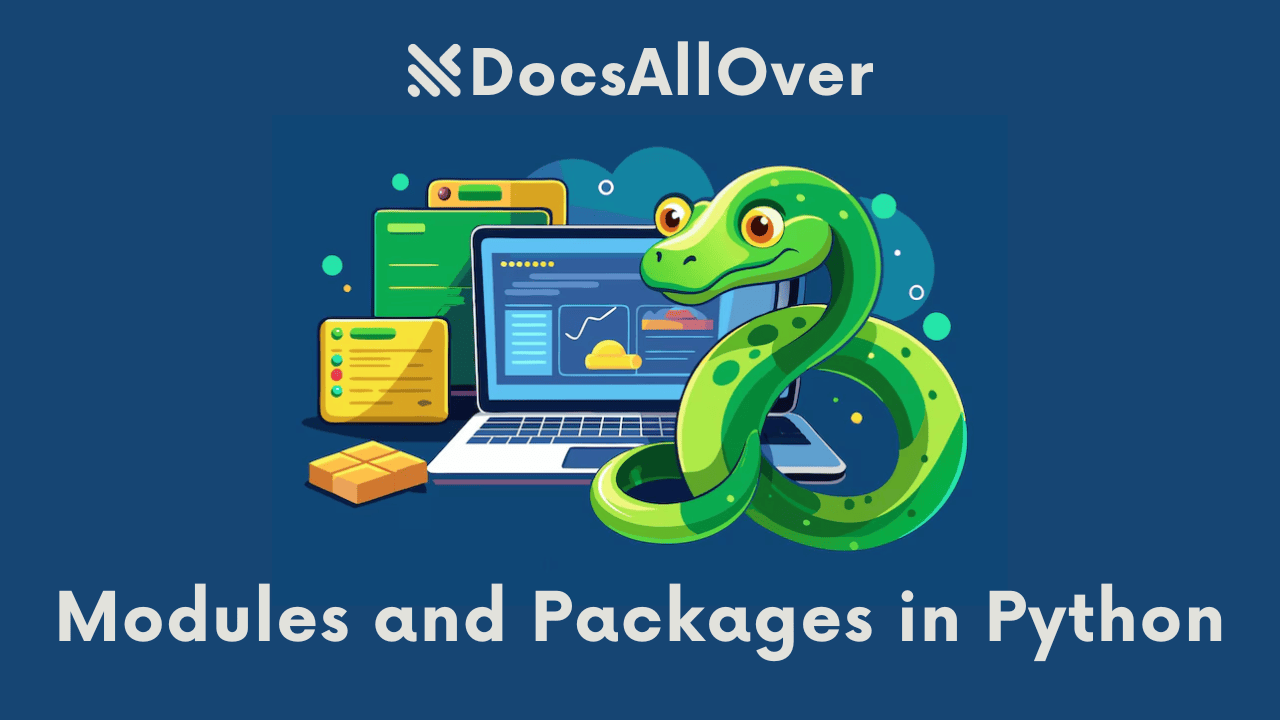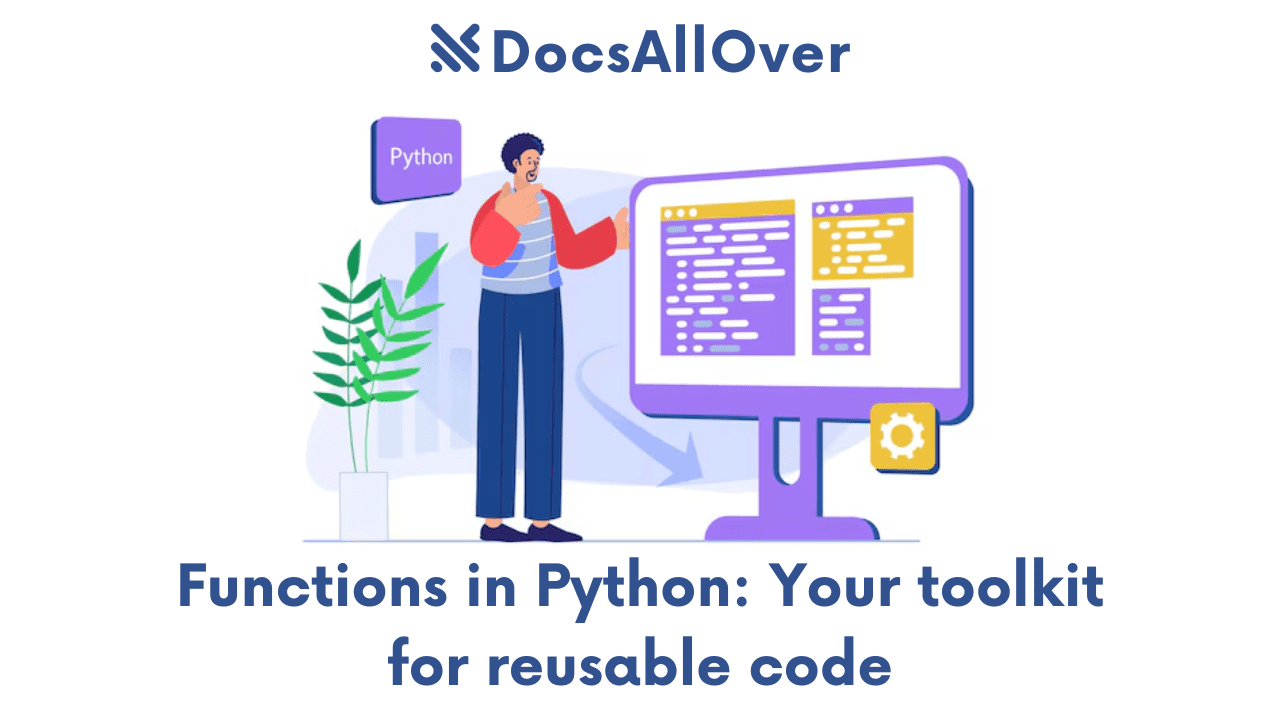A Roadmap for Python Beginners: Navigating Your Path to Python Proficiency
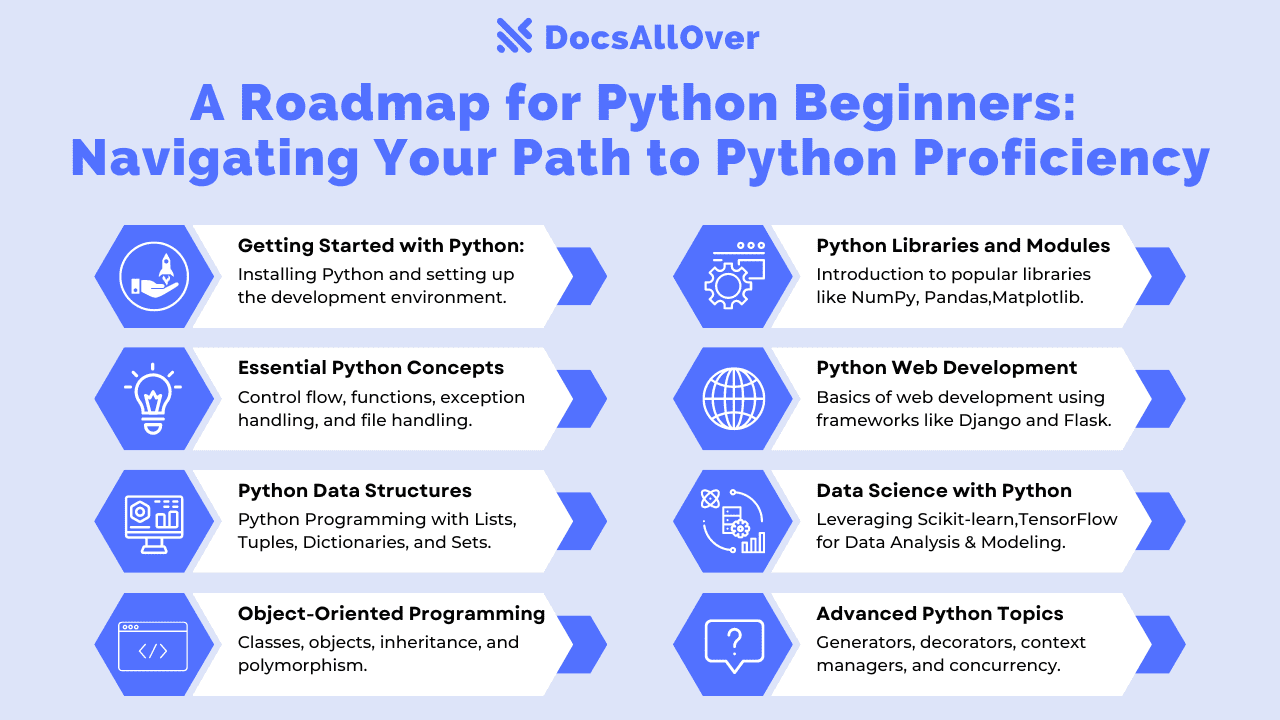
Python, a beginner-friendly programming language, has witnessed a remarkable surge in popularity in recent years. If you're new to Python and eager to embark on your learning journey, this blog is designed to be your compass. We have meticulously crafted a comprehensive roadmap that will guide you through the vast and exciting realm of Python, enabling you to cultivate your skills gradually and with confidence. Whether you're taking your first steps or seeking to explore advanced concepts, join us as we unravel the intricacies of Python and equip you with the knowledge to thrive in your Python programming endeavors. Let's dive into this roadmap for Python beginners and unlock the full potential of this powerful language.
Benefits of using Python:
- Easy to learn: Python is a relatively easy language to learn, especially for beginners. It has a simple syntax that is similar to human language, which makes it easy to read and write Python code.
- Powerful: Python is a powerful language that can be used to develop a wide variety of applications. It has a rich library of modules and packages that can be used to extend the functionality of Python.
- Free and open source: Python is a free and open source language, which means that it is available to everyone to use and modify. This makes it a popular choice for both personal and commercial projects.
- Portable: Python is a portable language, which means that it can run on a variety of platforms, including Windows, macOS, Linux, and Unix. This makes it a good choice for developing cross-platform applications.
- Versatility: Python is a versatile language that can be used for a wide variety of applications, including web development, data science, machine learning, and artificial intelligence. This makes it a good choice for programmers who want to work on a variety of projects.
Examples of how Python can be used:
- Web development: Python can be used to develop web applications using frameworks such as Django and Flask.
- Data science: Python can be used for data science tasks such as data analysis, data visualization, and machine learning.
- Machine learning: Python can be used to develop machine learning models for tasks such as classification, regression, and clustering.
- Artificial intelligence: Python can be used to develop artificial intelligence applications, such as chatbots and virtual assistants.
In addition to the benefits listed above, Python is also a popular language for education and research. It is used in many universities and research institutions to teach programming and to develop new software applications.
Suggestions for getting started with Python:
- Start with a good tutorial or course: There are many great online tutorials and courses available for learning Python. Find one that is well-written and easy to follow.
- Practice regularly: The best way to learn Python is by practicing. Try to write Python code every day.
- Don't be afraid to ask for help: If you get stuck, don't be afraid to ask for help from other Python developers. There are many online forums and chat rooms where you can ask questions and get help.
- Use the Python documentation: The Python documentation is a great resource for learning about the language and its features.
- Contribute to open source projects: Once you have a good understanding of Python, you can contribute to open source Python projects. This is a great way to learn from other developers and to improve your Python skills.
1. Getting Started with Python:
Installing Python and setting up the development environment: You'll learn how to download and install Python on your machine and configure your development environment.
Exploring the Python interpreter and running your first program: You'll understand how to use the Python interpreter to execute Python code and run a simple "Hello, World!" program.
Understanding Python's syntax and basic data types: You'll explore Python's syntax rules and learn about fundamental data types such as numbers, strings, booleans, lists, tuples, and dictionaries.
Working with variables and operators: You'll learn how to create variables, assign values to them, and perform basic operations using arithmetic, comparison, and logical operators.
This simple program prints the "Hello, World!" message to the console, serving as the traditional starting point for beginners in any programming language.
2. Essential Python Concepts:
Control flow: You'll dive into if-else statements and different types of loops (for and while) to control the flow of execution in your programs. You'll also learn about conditional expressions for concise conditional statements.
Functions: You'll understand the concept of functions, how to define and use them, pass arguments, and return values.
Handling exceptions: You'll learn how to handle runtime errors using try-except blocks, allowing your program to gracefully handle unexpected situations.
Working with files: You'll explore reading data from files, writing data to files, and understanding file handling concepts such as opening, closing, and manipulating file objects.
This code demonstrates variable assignment, addition, and string concatenation. It calculates the sum of two numbers (a and b) and prints the result.
3. Python Data Structures:
Lists: You'll learn about lists, a versatile data structure for storing collections of items. You'll understand how to create lists, access elements by index, and perform common operations like adding and removing items.
Tuples: You'll explore tuples, similar to lists but immutable, meaning their elements cannot be modified after creation.
Dictionaries: You'll discover dictionaries, which store key-value pairs and allow efficient data retrieval based on keys.
Sets: You'll learn about sets, unordered collections of unique elements, and their common operations such as adding, removing, and performing set operations like union, intersection, and difference.
This example shows how to create a list of fruits and access elements using indexing. In this case, it prints the first fruit in the list.
4. Object-Oriented Programming (OOP) in Python:
Understanding classes, objects, and instances: You'll grasp the fundamental concepts of OOP, including classes, objects, and instances. You'll learn how to define classes and create objects from those classes.
Encapsulation, inheritance, and polymorphism: You'll delve into advanced OOP concepts like encapsulation, which encapsulates data and behavior within objects, inheritance, which allows classes to inherit properties and methods from other classes, and polymorphism, which enables objects to take on different forms and behaviors.
Creating and using Python classes: You'll learn how to create your own classes, define attributes and methods, and use objects of those classes in your programs.
Exploring OOP concepts through practical examples: You'll see real-world examples of how OOP principles can be applied to solve problems and organize code effectively.
This code defines a Rectangle class with a constructor method (init) and an area calculation method. It creates an instance of the class, sets the length and width, and calculates the area.
5. Python Libraries and Modules:
Introduction to popular Python libraries like NumPy, Pandas, and Matplotlib: You'll discover widely used libraries that extend Python's functionality and provide powerful tools for data manipulation, analysis, and visualization.
Installing and importing external libraries: You'll learn how to install additional libraries using package managers like pip and import them into your Python programs.
Exploring the functionality and use cases of different libraries: You'll understand the purpose and capabilities of various libraries and how they can be used to solve specific tasks or address certain domains.
Leveraging the power of third-party modules to enhance your Python projects: You'll explore how to use third-party modules to extend the capabilities of your Python applications, accessing pre-built functionality to save time and effort.
This example demonstrates how to import and use the math module in Python. It calculates the circumference of a circle using the value of pi from the math module.
6. Web Development with Python:
Basics of web development using frameworks like Django and Flask: You'll get an introduction to web development and explore popular Python web frameworks like Django and Flask.
Setting up a web server and handling HTTP requests: You'll learn how to set up a local development server and handle incoming HTTP requests using Python.
Building interactive web applications with Python backend: You'll understand how to create dynamic web applications by combining Python code with HTML, CSS, and JavaScript.
Introduction to HTML, CSS, and JavaScript integration with Python: You'll explore the basics of HTML, CSS, and JavaScript and how they can be integrated into Python web applications for enhanced user experience.
This code sets up a basic Flask web application. It defines a route for the root URL ('/') and a corresponding function that returns a "Hello, Flask!" message when accessed. The app is then run using the Flask development server.
7. Data Science and Machine Learning:
Exploring the world of data science and machine learning with Python: You'll get an overview of data science and machine learning concepts and understand how Python is widely used in these domains.
Using libraries like Scikit-learn and TensorFlow for data analysis and modeling: You'll learn about popular Python libraries used in data science and machine learning, such as Scikit-learn for machine learning algorithms and TensorFlow for deep learning.
Understanding data preprocessing, feature extraction, and model training: You'll explore essential data preprocessing techniques, feature extraction methods, and how to train machine learning models using Python.
Building predictive models and evaluating their performance: You'll learn how to build predictive models using Python and assess their performance using metrics and evaluation techniques.
This example showcases the use of Scikit-learn library for classification tasks. It loads the Iris dataset, splits it into training and testing sets, creates a KNN classifier, fits the model to the training data, and makes predictions on the test set.
8. Advanced Python Topics:
Generators and iterators: You'll delve into advanced Python features like generators and iterators, which allow efficient handling of large datasets and enable lazy evaluation.
Decorators: You'll understand how decorators can be used to modify the behavior of functions or classes, adding extra functionality without modifying their source code.
Context managers: You'll learn about context managers, which facilitate the management of resources like files or database connections and ensure proper cleanup.
Concurrency and parallelism: You'll explore techniques to leverage multiple threads and processes for concurrent and parallel execution, improving performance and responsiveness of Python programs.
This code demonstrates the use of a context manager (the 'with' statement) to work with external resources like files. It opens a file in write mode, writes a message to it, and automatically closes the file after the block.
These examples provide a glimpse into various aspects of Python programming, from basic syntax to more advanced topics and libraries. Experiment with these examples, modify them, and continue exploring Python to further enhance your skills and understanding.
Embarking on your Python learning journey can be both exciting and rewarding. By following this roadmap for Python beginners, you'll gradually develop your skills and gain confidence in Python programming. Remember to practice regularly, explore real-world projects, and seek guidance from online resources and communities. With dedication and perseverance, you'll be able to unlock the full potential of Python and embark on a successful programming career.
By following this Python roadmap, you'll gain a solid foundation in Python programming and be well-equipped to explore various domains, ranging from web development and data science to machine learning and advanced programming concepts. Remember to practice coding and experiment with different examples to reinforce your learning. Happy coding!
